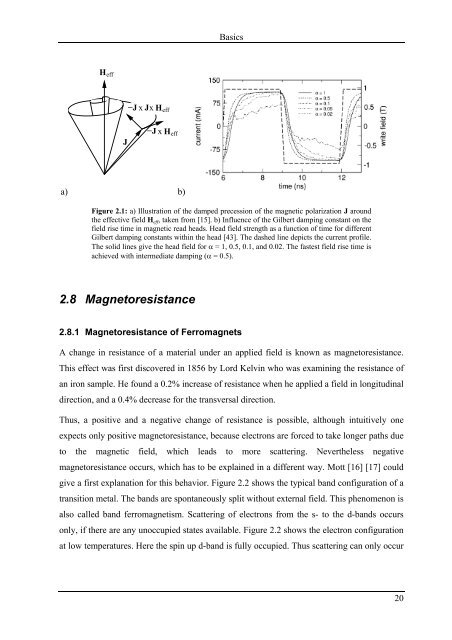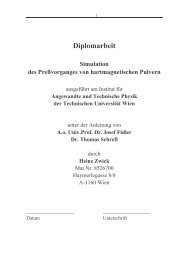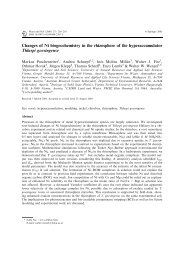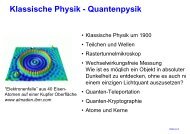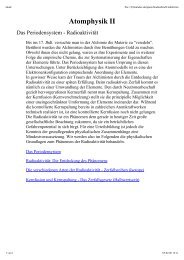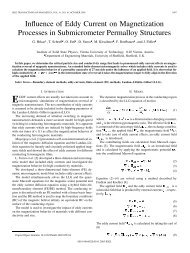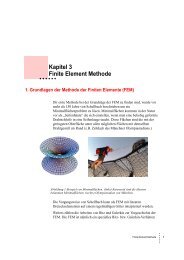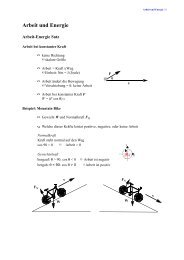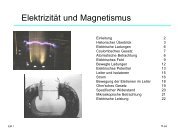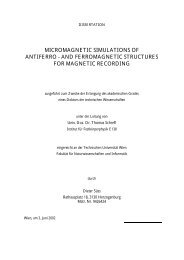Read Back Signals in Magnetic Recording - Research Group Fidler
Read Back Signals in Magnetic Recording - Research Group Fidler
Read Back Signals in Magnetic Recording - Research Group Fidler
Create successful ePaper yourself
Turn your PDF publications into a flip-book with our unique Google optimized e-Paper software.
a)<br />
Heff<br />
J<br />
−J x Jx Heff<br />
−J x Heff<br />
b)<br />
Basics<br />
Figure 2.1: a) Illustration of the damped precession of the magnetic polarization J around<br />
the effective field Heff, taken from [15]. b) Influence of the Gilbert damp<strong>in</strong>g constant on the<br />
field rise time <strong>in</strong> magnetic read heads. Head field strength as a function of time for different<br />
Gilbert damp<strong>in</strong>g constants with<strong>in</strong> the head [43]. The dashed l<strong>in</strong>e depicts the current profile.<br />
The solid l<strong>in</strong>es give the head field for α = 1, 0.5, 0.1, and 0.02. The fastest field rise time is<br />
achieved with <strong>in</strong>termediate damp<strong>in</strong>g (α = 0.5).<br />
2.8 Magnetoresistance<br />
2.8.1 Magnetoresistance of Ferromagnets<br />
A change <strong>in</strong> resistance of a material under an applied field is known as magnetoresistance.<br />
This effect was first discovered <strong>in</strong> 1856 by Lord Kelv<strong>in</strong> who was exam<strong>in</strong><strong>in</strong>g the resistance of<br />
an iron sample. He found a 0.2% <strong>in</strong>crease of resistance when he applied a field <strong>in</strong> longitud<strong>in</strong>al<br />
direction, and a 0.4% decrease for the transversal direction.<br />
Thus, a positive and a negative change of resistance is possible, although <strong>in</strong>tuitively one<br />
expects only positive magnetoresistance, because electrons are forced to take longer paths due<br />
to the magnetic field, which leads to more scatter<strong>in</strong>g. Nevertheless negative<br />
magnetoresistance occurs, which has to be expla<strong>in</strong>ed <strong>in</strong> a different way. Mott [16] [17] could<br />
give a first explanation for this behavior. Figure 2.2 shows the typical band configuration of a<br />
transition metal. The bands are spontaneously split without external field. This phenomenon is<br />
also called band ferromagnetism. Scatter<strong>in</strong>g of electrons from the s- to the d-bands occurs<br />
only, if there are any unoccupied states available. Figure 2.2 shows the electron configuration<br />
at low temperatures. Here the sp<strong>in</strong> up d-band is fully occupied. Thus scatter<strong>in</strong>g can only occur<br />
20


